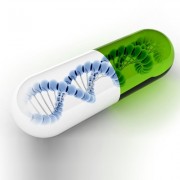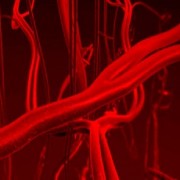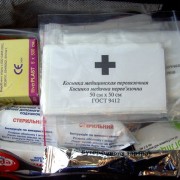LAMOTRIGINEЛАМОТРИДЖИН
Содержание:
Availability
GlaxoSmithKline’s trademarked brand of Lamotrigine, Lamictal, is manufactured in scored tablets (25 mg, 100 mg, 150 mg and 200 mg) and chewable dispersible tablets (2 mg, 5 mg and 25 mg). Five-week sample kits are also available; these include titration instructions and scored tablets (25 mg for patients taking valproate, 25 mg and 100 mg for patients not taking valproate). Lamotrigine is also available in un-scored tablet form. In 2005, Teva Pharmaceutical Industries Ltd. began selling generic Lamotrigine in the United States, but only in 5 mg and 25 mg chewable dispersible tablets. Lamotrigine is also available in generic form in the United Kingdom and Canada.
History
- 1991 — Lamotrigine is first used in the United Kingdom as an anticonvulsant medication
- December 1994 — lamotrigine was first approved for use in the United States and, that for the treatment of partial seizures.
- August 1998 — for use as adjunctive treatment of Lennox-Gastaut syndrome in pediatric and adult patients, new dosage form: chewable dispersible tablets.
- December 1998 — for use as monotherapy for treatment of partial seizures in adult patients when converting from a single enzyme-inducing anticonvulsant drug.
- January 2003 — for use as adjunctive therapy for partial seizures in pediatric patients as young as two years of age.
- June 2003 — approved for maintenance treatment of Bipolar II disorder; the first such medication since lithium.
- January 2004 — for use as monotherapy for treatment of partial seizures in adult patients when converting from the anti-epileptic drug valproate .
U.S. FDA approval history
- December 1994 — for use as adjunctive treatment for partial seizures with or without secondary generalization in adult patients (16 years of age and older).
- August 1998 — for use as adjunctive treatment of Lennox-Gastaut syndrome in pediatric and adult patients, new dosage form: chewable dispersible tablets.
- December 1998 — for use as monotherapy for treatment of partial seizures in adult patients when converting from a single enzyme-inducing anti-epileptic drug (EIAED).
- January 2003 — for use as adjunctive therapy for partial seizures in pediatric patients as young as 2 years of age.
- June 2003 — for the maintenance treatment of adults with Bipolar I Disorder to delay the time to occurrence of mood episodes (depression, mania, hypomania, mixed episodes) in patients treated for acute mood episodes with standard therapy. Additionally, the FDA has noted that findings for Lamictal maintenance treatment were more robust in bipolar depression.
- January 2004 — for use as monotherapy for treatment of partial seizures in adult patients when converting from the anti-epileptic drug valproate (including valproic acid (Depakene) and divalproex sodium (Depakote)).
Ламотриджин Lamotrigine
ЛАМОТРИДЖИН (Lamotrigine).
3,5-Диамино-6-(2,3-дихлорфенил)-1,2,4-триазин.
Синонимы: Ламиктал, Lamictal.
Оригинальный по структуре и действию противосудорожный (противоэпилептический) препарат.
Противосудорожное действие связано со стабилизацией пресинаптических нейрональных мембран, блокадой потенциалзависимых натриевых каналов и предотвращением высвобождения возбуждающих нейромедиаторных аминокислот (главным образом глутамата, а также аспартата).
При приеме внутрь препарат хорошо всасывается, C max составляет 2-2,5 ч; Т 1/2 — 30 ч; метаболизируется в печени с образованием глюкоронидов; выводится главным образом мочой, в небольших количествах фекалиями.
Применяют для монотерапии и дополнительной терапии парциальных и генерализованных припадков эплепсии. Эффективен в случаях резистентности к другим противоэпилептическим препаратам.
Назначают взрослым и детям старше 12 лет при монотерапии, начиная с дозы 0,025 г (25 мг) 1 раз в сутки в течении 2 нед, затем увеличивают дозу до 0,05 г 1 раз сутки в течение следующих 2 нед, потом постепенно повышают дозу на 0,05-0,1 г каждые 1-2 нед до получения терапевтического эффекта. Средняя поддерживающая доза 0,2 г в сутки в 2 приема (в некоторых случаях до 0,5 г в сутки).
Детям в возрасте от 2 до 12 лет назначают начиная с 0,2 мг/кг 1 раз в сутки в течении 2 нед, в дальнейшем по 0,5 мг/кг 1 раз в сутки в течении 2 нед, затем подбирают эффективную терапевтическуб дозу. Средняя поддерживающая доза 1-5 мг/кг в сутки в 1-2 приема.
Ламотриджин применяют и в сочетании с другими противоэпилептическими препаратами. Необходмо, однако, учитывать, что фенобарбитал, карбамазепин, гексамидин (в связи с индукцией метаболизирующих ферментов печени) могут ослабить его действие, а вальпроат натрия замедляет метаболизм ламотриджина и усиливает его действие. Поэтому при одновременном приеме с вальпроаном натрия дозу ламотриджина уменьшают: начальную суточную (в первые 2 нед) — до 0,05 г, а поддерживающую — до 0,2-0,4 г.
Препарат обычно хорошо переносится; могут наблюдаться, однако, головокружение, головная боль, сонливость или повышенная раздражительность, диплопия, аллергические реакции (кожная сыпь, отек Квинке).
Противопоказан при печеночной недостаточности.
Требуется осторожность при назначении ламотриджина пожилым людям и беременным; при отсутствии крайней необходимости в первые 3 мес беременности принимать препарат не следует. Не рекомендуется назначать ламотриджин детям в возрасте до 2 лет
Форма выпуска: таблетки по 0,025; 0,05 и 0,1 г (25, 50 и 100 мг), таблетки жевательные — 0,005; 0,025 и 0,1 г (N.30).
Хранение: список Б.
Инструкция
Фармакологическое действие
Противосудорожное средство. Механизм действия связан с влиянием на потенциалзависимые натриевые каналы пресинаптической мембраны. Это приводит к уменьшению выделения в синаптическую щель медиаторов, в первую очередь глутамата — возбуждающей аминокислоты, играющей важную роль в формировании эпилептических разрядов в головном мозге.
Фармакокинетика
После приема внутрь ламотриджин быстро и полностью абсорбируется из ЖКТ. Cmax в плазме достигается примерно через 2.5 ч. Связывание с белками плазмы составляет 55%. Подвергается интенсивному метаболизму с образованием основного метаболита N-глюкуронида.
T1/2 у взрослых составляет в среднем 29 ч. Выводится почками главным образом в виде метаболита; около 8% активного вещества выводится в неизмененном виде.
T1/2 у детей меньше, чем у взрослых.
Дозировка
При приеме внутрь для взрослых и детей старше 12 лет начальная разовая доза составляет 25-50 мг, поддерживающие дозы — 100-200 мг/сут. В редких случаях могут потребоваться дозы 500-700 мг/сут.
Для детей в возрасте от 2 до 12 лет начальная доза составляет 0.2-2 мг/кг/сут, поддерживающая — 1-15 мг/кг/сут.
Максимальная суточная доза для детей в возрасте от 2 до 12 лет, в зависимости от применяемой схемы лечения, составляет 200-400 мг.
Частота приема, интервалы между приемами при повышении дозы зависят от применяемой схемы лечения, реакции пациента на проводимое лечение.
Лекарственное взаимодействие
При одновременном применении с противосудорожными средствами — индукторами метаболизма в печени (в т.ч. с фенитоином, карбамазепином, фенобарбиталом, примидоном) ускоряется метаболизм ламотриджина. При одновременном применении ламотриджина и карбамазепина или фенитоина происходит уменьшение T1/2 ламотриджина. Имеются сообщения о головокружении, атаксии, диплопии, нечеткости зрения и тошноте у пациентов, принимающих карбамазепин после начала лечения ламотриджином.
Вследствие ингибирования микросомальных ферментов печени под влиянием вальпроата натрия, при одновременном применении замедляется метаболизм ламотриджина, увеличивается T1/2 ламотриджина.
Применение при беременности и лактации
Клинические данные о безопасности применения ламотриджина при беременности и в период лактации недостаточны.
При решении необходимости применения при беременности следует сопоставить ожидаемую пользу терапии для матери и потенциальный риск для плода.
Предварительные данные показывают, что ламотриджин проникает в грудное молоко в концентрации, составляющей 40-45% от концентрации в плазме. У небольшого числа грудных детей, матери которых получали ламотриджин, не отмечено побочного действия.
Побочные действия
Со стороны ЦНС: головная боль, головокружение, сонливость, нарушения сна, чувство усталости, агрессивность, спутанность сознания.
Со стороны системы кроветворения: лейкопения, тромбоцитопения.
Аллергические реакции: кожная сыпь (обычно макуло-папулезная), ангионевротический отек, синдром Стивенса-Джонсона, токсический эпидермальный некролиз, лимфаденопатия.
Показания
Парциальные и генерализованные тонико-клонические судорожные припадки (чаще в случаях резистентности к лечению другими противосудорожными средствами).
Особые указания
С осторожностью применяют у пациентов с почечной недостаточностью. Не следует применять ламотриджин у пациентов пожилого возраста
Не следует применять ламотриджин у пациентов пожилого возраста.
При появлении выраженных кожных аллергических реакций применение ламотриджина следует прекратить.
При внезапной отмене ламотриджина возможно усиление проявлений эпилепсии, поэтому необходимо постепенно прекращать лечение, уменьшая дозу в течение 2 недель.
При одновременном применении с карбамазепином возможны головокружение, диплопия, атаксия, нарушения зрения, тошнота. Эти явления, как правило, проходят при уменьшении дозы карбамазепина.
Не следует применять ламотриджин у детей в возрасте до 2 лет.
Влияние на способность к вождению автотранспорта и управлению механизмами
В период лечения наблюдается замедление скорости психомоторных реакций. Это необходимо учитывать лицам, занимающимся потенциально опасными видами деятельности, требующими повышенного внимания и быстрых психомоторных реакций.
Side effects
Lamotrigine prescribing information has a black box warning about life threatening skin reactions, including Stevens-Johnson Syndrome and Toxic Epidermal Necrolysis. The manufacturer states that nearly all cases appear in the first 2 to 8 weeks of therapy and if medication is suddenly stopped then resumed at the normal dosage. Patients should seek medical attention for any unexpected skin rash as its presence is an indication of a deadly side effect of the drug.
Cognitive side effects are common with doses over 50mg qid, per 2001-2003 Glaxo-sponsored Clinical Trials comparing quality of life between Topiramate and Lamotigine in healthy volunteers (unpublished).
Common side effects include headaches, dizziness and insomnia. Other side effects may include acne and skin irritation, vivid dreams or nightmares, night sweats, body aches and cramps, fatigue, memory and cognitive problems, irritability, weight changes, hair loss, changes in libido, frequent urination, nausea, and other side effects. In very rare cases, Lamotrigine has been known to cause the development of a dangerous rash called Stevens-Johnson syndrome (or SJS). The rash is more common in children, so this medication is often reserved for adults. There is also an increased incidence of this rash in patients who are currently on, or recently discontinued a valproates anti-convulsant drug, as these medications interact in such a way that the clearance of both is decreased and the effective dose of lamotrigine is increased. Muscle aches are another fairly common side effect, and there are occasional reports of dry mouth.
In clinical trials women were more likely than men to have side effects. This is the opposite of most other anticonvulsants and antipsychotics. It’s been suggested that genetic background makes a difference in dosages, with those of non-Caucasian background typically needing lower doses.
Lamotrigine binds to melanin-containing tissues such as the iris of the eye. The long-term consequences of this are unknown.
Use during pregnancy is recommended only if benefits outweigh potential risks. It was also reported on CNN in September 2006 that taking Lamictal during the first trimester of pregnancy can lead to a cleft palate in babies. Lamotrigine is found in breast milk; breast-feeding is not recommended during treatment.
Some patients have reported experiencing a loss of concentration, even with very small doses, while some others have actually reported an increase in alertness and concentration. In general, however, it tends to have less of an impact on concentration relative to other mood stabilizers.[citation needed] GlaxoSmithKline investigated lamotrigine for the treatment of ADHD. The results were inconclusive. No detrimental effects on cognitive function were observed, however, the only statistical improvement in core ADHD symptoms was an improvement on a test (PASAT) that measures auditory processing speed and calculation ability.
Medical uses
Epilepsy
Lamotrigine is considered a first-line drug for primary generalized tonic-clonic seizures (includes simple partial, complex partial, and secondarily generalized seizures such as focal-onset tonic-clonic seizures). It is also used as an alternative or adjuvant medication for partial seizures, such as absence seizure, myoclonic seizure, and atonic seizures.
Lennox–Gastaut syndrome
Lamotrigine is one of a small number of FDA-approved therapies for the form of epilepsy known as Lennox–Gastaut syndrome. It reduces the frequency of LGS seizures, and is one of two medications known to decrease the severity of drop attacks. Combination with valproate is common, but this increases the risk of lamotrigine-induced rash, and necessitates reduced dosing due to the interaction of these drugs.
Bipolar disorder
Lamotrigine is approved in the US for maintenance treatment of bipolar I disorder and bipolar II disorder. While the anticonvulsants carbamazepine and valproate are predominantly antimanics, lamotrigine is most effective for preventing the recurrent depressive episodes of bipolar disorder. The drug seems ineffective in the treatment of current rapid-cycling, acute mania, or acute depression in bipolar disorder; however, it is effective at prevention of or delaying of manic, depressive, or rapid cycling episodes. According to studies in 2007, lamotrigine may treat bipolar depression without triggering mania, hypomania, mixed states, or rapid-cycling.
Therapeutic benefit is less evident when lamotrigine is used to treat a current-mood episode. It has not demonstrated effectiveness in treating acute mania, and there is controversy regarding the drug’s effectiveness in treating acute bipolar depression. While the 2002 American Psychiatric Association (APA) guidelines recommend lamotrigine as a first-line treatment for acute depression in bipolar II disorder, their website notes that the guidelines, being more than five years old, «can no longer be assumed to be current». A paper written in 2008 by Nassir et al. reviewed evidence from trials that were unpublished and not referenced in the 2002 APA guidelines, and it concludes that lamotrigine has «very limited, if any, efficacy in the treatment of acute bipolar depression». A 2008 paper by Calabrese et al. examined much of the same data, and found that in five placebo-controlled studies, lamotrigine did not significantly differ from placebo in the treatment of bipolar depression. However, in a meta-analysis of these studies conducted in 2008, Calabrese found that lamotrigine was effective in individuals with bipolar depression, with a number needed to treat (NNT) of 11, or 7 in severe depression.
A 2013 review about lamotrigine concluded that it is recommended in bipolar maintenance when depression is prominent and that more research is needed in regard to its role in the treatment of acute bipolar depression and unipolar depression. Furthermore, no information to recommend its use in other psychiatric disorders was found.
Off-label uses include the treatment of peripheral neuropathy, trigeminal neuralgia, cluster headaches, migraines, visual snow, and reducing neuropathic pain, although a systematic review conducted in 2013 concluded that well-designed clinical trials have shown no benefit for lamotrigine in neuropathic pain. Off-label psychiatric usage includes the treatment of treatment-resistant obsessive-compulsive disorder,depersonalization disorder,hallucinogen persisting perception disorder,schizoaffective disorder,borderline personality disorder, and post-traumatic stress disorder.[]
Indications and usage
The US FDA approved lamotrigine (Lamictal) for the treatment of epilepsy in 1994, and bipolar I disorder in 2003 . Off-label uses include the treatment of peripheral neuropathy, trigeminal neuralgia, cluster headaches, migraines, and reducing neuropathic pain (Backonja, 2004; Jensen 2002; Pappagallo, 2003). Off-label psychiatric usage includes the treatment of bipolar II disorders, schizoaffective disorder, borderline personality disorder, post traumatic stress disorder, and as adjunctive therapy for «treatment-resistant» unipolar depression (Barbosa, Berk & Vorster, 2003). Lamotrigine is one of a small number of FDA-approved therapies for seizures associated with Lennox-Gastaut syndrome; it is one of two approved for the maintenance treatment of bipolar disorder.
Lennox-Gastaut syndrome (LGS) is a severe form of epilepsy. Typically developing before 4 years of age, LGS is associated with developmental delays. There is no cure, treatment is often complicated, and complete recovery is rare. Symptoms include the atonic seizure (also known as a «drop attack»), during which brief loss of muscle tone and consciousness cause abrupt falls. Lamotrigine significantly reduces the frequency of LGS seizures, and is one of two medications known to decrease the severity of drop attacks (French et al., 2004). Combination with valproate is common, but this increases the risk of lamotrigine-induced rash, and necessitates reduced dosing due to the interaction of these drugs (Pellock, 1999).
Lamotrigine (Lamictal) is the first FDA-approved therapy since lithium for maintenance treatment of bipolar I disorder (GlaxoSmithKline, 2003). While traditional anticonvulsant drugs are primarily antimanics, lamotrigine is most effective in the treatment and prophylaxis of bipolar depression. Lamotrigine treats bipolar depression without triggering mania, hypomania, mixed states, or rapid-cycling, and the 2002 American Psychiatric Association guidelines recommended lamotrigine as a first-line treatment for acute depression in bipolar disorder as well as a maintenance therapy, however lamotrigine is not indicated «on label» for treatment of acute symptoms. Because the dosage must be slowly increased from a sub-therapeutic level to the therapeutic level of 100-200 mg, its utility in the management of acute manic symptoms is debatable; typically benzodiazepines or another anticonvulsant will be used to manage the acute mania until the lamotrigine reaches therapeutic blood concentration.
References
- ^
- ^
- Kasper D (2005). Fauci AS, Braunwald E, et al. (eds.). Harrison’s Principles of Internal Medicine, 16th ed. McGraw-Hill. pp. 3–22. ISBN .
- Tierny LM (2006). McPhee SJ, Papadakis MA (eds.). . McGraw-Hill. ISBN 978-0071454100.
- ^ GlaxoSmithKline, 2003
- ^
- ^
- ^
- ^
- ^
- ^
- Berwaerts K, Sienaert P, De Fruyt J (2009). «». Tijdschrift Voor Psychiatrie (in Dutch). 51 (10): 741–50. PMID .
- Prabhu LV, Nasar MA, Rai R, Madhyastha S, Singh G (October 2007). «Lamotrigine in pregnancy: safety profile and the risk of malformations». Singapore Medical Journal. 48 (10): 880–3. PMID .
- Hale TW (2008). Medications and Mothers’ Milk (13th ed.). Hale Publishing. p. 532. ISBN 978-0-9815257-2-3.
- Rogawski M (2002). «Chapter 1: Principles of antiepileptic drug action». In Levy RH, Mattson RH, Meldrum BS, Perucca E (eds.). Antiepileptic Drugs, Fifth Edition. Lippincott Williams & Wilkins. pp. 3–22. ISBN .
- ^
References
- Backonja, M. (2004). Neuromodulating drugs for the symptomatic treatment of neuropathic pain. Cur Pain Headache Rep. 8(3):212–6
- Barbosa, L. Berk, M. Vorster, M. (2003). A double-blind, randomized, placebo-controlled trial of augmentation with lamotrigine or placebo in patients concomitantly treated with fluoxetine for resistant major depressive episodes. . J Clin Psychiatry. 64(4):403–407.
- Campbell, G.H. Lutsep, H.L. (2004, 16 December). Trigeminal neuralgia. J. Mendizabal, et al. (Eds). Accessed on March 22, 2005.
- Center for Drug Evaluation and Research. (2005, 01 April). A catalog of FDA approved drug products. Washington, DC: U.S. Food and Drug Administration. Accessed on April 01, 2005.
- Center for Drug Evaluation and Research. (2005, 01 April). Electronic orange book: Approved drug products. Washington, DC: U.S. Food and Drug Administration. Accessed on April 01, 2005.
- Curry, W.J. and Kulling, D.L. (1998). Newer Antiepileptic Drugs: Gabapentin, Lamotrigine, Felbamate, Topiramate and Fosphenytoin. American Family Physician. 57(3): 513-?.
- French, J.A. et al. (2004). Efficacy and tolerability of the new antiepileptic drugs II: Treatment of refractory epilepsy . Neurology. 62:1261–1273.
- GlaxoSmithKline. (2003, June 23). Lamictal: First medication since Lithium approved for long-term maintenance treatment of bipolar disorder. Press Release.
- GlaxoSmithKline. (2004, January 14). For epilepsy it is used to treat partial seizures, primary and secondary tonic-clonic seizures, and seizures associated with Lennox-Gastaut syndrome. Lamictal (lamotrigine): Prescribing information. Accessed on February 02, 2005.
- GlaxoSmithKline UK. (2004, February 09). Lamictal combined tablets. electronic Medicines Compendium. Accessed on February 02, 2005.
- Glauser, T.A. Morita, D.A. (2002, January 30). Lennox-gastaut syndrome. (eds). Accessed on March 22, 2005.
- Huntington’s Outreach Project for Education. (2004, December 08). Lamotrigine disease mechanism V: Glutamate toxicity Stanford University. Accessed on March 12, 2005.
- Jensen, T.S. (2002). Anticonvulsants in neuropathic pain: rationale and clinical evidence. . Eur J Pain. 6 Suppl A:61–68.
- Ochoa, J.G. & Riche W. (2005, 02 March). Antiepileptic drugs: An overview. E.A. Passaro, et al (Eds). Accessed on March 12, 2005.
- Pappagallo, M. (2003). Newer antiepileptic drugs: possible uses in the treatment of neuropathic pain and migraine. . Clin. Ther. 25(10):2506–38.
- Pellock, J.M. (1999). Managing pediatric epilepsy syndromes with new antiepileptic drugs . Pediatrics. 104(5): 1106–1116.
ЛАМОТРИДЖИН
Таблетки белого или белого с желтоватым оттенком цвета, круглые, плоскоцилиндрические, с риской с одной стороны и фасками с двух сторон.
| 1 таб. | |
| ламотриджин | 200 мг |
Вспомогательные вещества: лактозы моногидрат (сахар молочный) – 335.6 мг, целлюлоза микрокристаллическая – 152 мг, повидон К-25 – 38 мг, карбоксиметилкрахмал натрия – 22.8 мг, магния стеарат – 7.6 мг, кремния диоксид коллоидный – 4 мг.
10 шт. – упаковки ячейковые контурные (1) – пачки картонные.10 шт. – упаковки ячейковые контурные (2) – пачки картонные.10 шт. – упаковки ячейковые контурные (3) – пачки картонные.10 шт. – упаковки ячейковые контурные (5) – пачки картонные.10 шт. – упаковки ячейковые контурные (10) – пачки картонные.25 шт.
– упаковки ячейковые контурные (1) – пачки картонные.25 шт. – упаковки ячейковые контурные (2) – пачки картонные.25 шт. – упаковки ячейковые контурные (3) – пачки картонные.25 шт. – упаковки ячейковые контурные (5) – пачки картонные.25 шт. – упаковки ячейковые контурные (10) – пачки картонные.30 шт. – упаковки ячейковые контурные (1) – пачки картонные.
30 шт. – упаковки ячейковые контурные (2) – пачки картонные.30 шт. – упаковки ячейковые контурные (3) – пачки картонные.30 шт. – упаковки ячейковые контурные (5) – пачки картонные.30 шт. – упаковки ячейковые контурные (10) – пачки картонные.50 шт. – упаковки ячейковые контурные (1) – пачки картонные.50 шт.
– упаковки ячейковые контурные (2) – пачки картонные.50 шт. – упаковки ячейковые контурные (3) – пачки картонные.50 шт. – упаковки ячейковые контурные (5) – пачки картонные.50 шт. – упаковки ячейковые контурные (10) – пачки картонные.10 шт. – банки (1) – пачки картонные.20 шт. – банки (1) – пачки картонные.30 шт. – банки (1) – пачки картонные.40 шт.
– банки (1) – пачки картонные.50 шт. – банки (1) – пачки картонные.
100 шт. – банки (1) – пачки картонные.
Применение в пожилом возрасте
Не следует применять ламотриджин у пациентов пожилого возраста.
https://youtube.com/watch?v=t2Xmpw1-_p8
Описание препарата ЛАМОТРИДЖИН основано на официально утвержденной инструкции по применению и утверждено компанией–производителем.
Обнаружили ошибку? Выделите ее и нажмите Ctrl+Enter.













